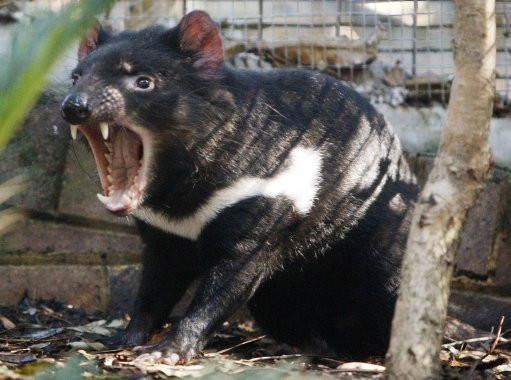Did Tasmanian Devil Cancer Originate from a Single Female?

Researchers at the Wellcome Trust Sanger Institute have discovered the root cause of Tasmanian devil's cancer.
The Tasmanian devil is the largest carnivorous marsupial, a mammal that has its babies in its pouch like the kangaroo. They are usually found in Australia.
The researchers took genomes from the Tasmanian devils that were suffering from cancer. They discovered that cancer was spreading among animals by bites.
They found the cancer cells had aroused from the cells of a single female Tasmanian devil that had died more than 15 years ago. Her DNA is living on in the contagious cancer cell line that she spawned.
The cancer causes the appearance of tumours on the face of the affected Tasmanian devils which grow rapidly and cause death within months.
According to the researchers, the spread of cancer between individuals is normally prevented by the immune system but the devil cancer may outwit the immune system. However, future studies will be required to explain how cancer escapes the immune destruction.
The researchers are further going to map the genomes of thousands of devil tumours in order to understand the genetic diversity present in the cancer and to investigate the genetic interactions between the cancer and the Tasmanian devil population.
The Tasmanian devil is the largest carnivorous marsupial. The animal got its name because of its loud and scary voice.
It is a nocturnal animal which usually eats dead animals. It has a super strong jaw that helps them crush and eat the bones of the dead animals. It weighs between 6 to 8 kg.
"The Tasmanian devil cancer is the only cancer that is threatening an entire species with extinction," said Dr Elizabeth Murchison from the Wellcome Trust Sanger Institute.
"Sequencing the genome of this cancer has allowed us to catalogue the mutations that caused this cancer to arise and to persist in the Tasmanian devil population," she said.
"This research is important because it allows us to understand the pattern of disease spread and this may help contain the epidemic. However, we also now need to use the genome sequence to understand more about how this cancer became transmissible. Cancers that transmit through populations are obviously incredibly rare, but we should use the Tasmanian devil example to understand the process to be prepared in the extremely unlikely event that such an epidemic ever occurs in humans." said Professor Mike Stratton, Director of the Wellcome Trust Sanger Institute.
Watch the video:
© Copyright IBTimes 2025. All rights reserved.





















